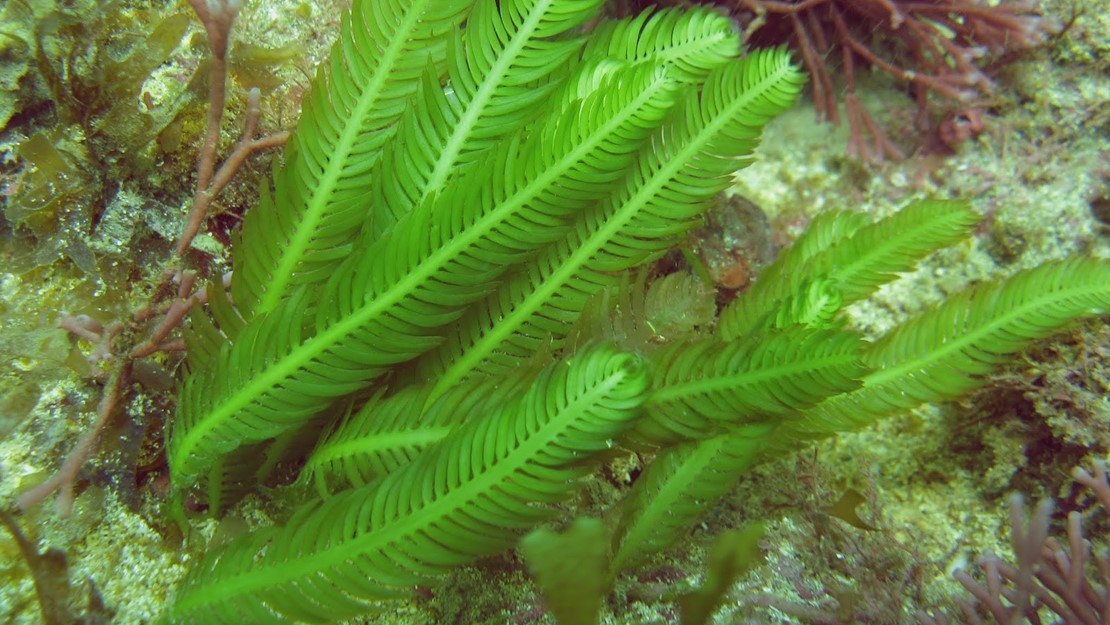Caulerpa taxifolia
Aquarium caulerpa
Also known as:
Killer algae
Family: Caulerpaceae
Origin: Africa, Asia, Australia, North and South America, Oceania

General description
Aquarium caulerpa is bright green in colour with long runners that grow many leafy feather-like fronds up to 15cm tall.
Fronds have a smooth midrib with opposite branchlets that curve upwards and narrow at the tip.
This plant can form dense fields in waters 1 metre to 35m deep.
What you need to know
Aquarium caulerpa is not in the wild in New Zealand but it could appear.
If aquarium caulerpa ever established here, it would pose a serious threat to our marine ecosystems.
Aquarium caulerpa contains a toxin that prevents most animals from eating it.
Some fish species can still eat it safely, but the toxin stays in their flesh. Humans can become sick if they eat fish containing caulerpa taxifolia toxin.
There are two other species of caulerpa that are causing a biosecurity response. For more information, see Exotic caulerpa.
Habitats
In its natural habitat, aquarium caulerpa can establish in:
- pristine waters
- nutrient-rich waters
- port and mooring facilities
- tropical and temperate waters at a depth of less than 100m.
It grows on many surfaces, including:
- sandy sea floors
- rocky outcrops
- mud
- human structures like jetties, buoys, and ship ropes.
Dispersal
Aquatic caulerpa is a popular species for aquariums overseas and could be in private aquariums here, creating a biosecurity risk if people dump aquarium waste.
The Ministry of Primary Industries has standards to reduce the risk of it hitchhiking to New Zealand on ships. For more information, see Hitchhiker pests.
In a natural marine environment it reproduces primarily by rapid vegetative growth from the runners. It can spread as fragments in the water column with storms and currents. It can also be spread by human activities like boating, diving and fishing.
Impact on environment
Likely to outcompete and smother native seagrasses and bottom dwelling invertebrates, which would alter habitat and impact native species. This would put our recreational, cultural and commercial marine activities at risk.
Control
If you think you have found aquatic caulerpa, do not attempt to remove it. Take a photo and note the location and any landmarks, and phone 0800 80 99 66.
If aquarium caulerpa ever established here, it would pose a serious threat to the marine ecosystems of New Zealand.



